A family visit to the Citadel of Chefchaouen !
Hello everyone!
I hope you're well and taking care of yourself. Today, I'd like to take you with me to a place I recently visited with my family, a place steeped in history, full of charm and colour, in the heart of the town of Chefchaouen: Kasbah of Chefchaouen (The citadel of Chefchaouen).
Chefchaouen is a small historic town in the north of Morocco that is often referred to as the ‘blue city’ because of its alleyways painted in soothing, almost magical shades of blue. But in the midst of all this colourful softness is an ancient building, with ochre walls, that seems to go back in time: The Kasbah (Citadel).
The kasbah of Chefchaouen is one of the city's oldest monuments. It stands right next to the large Outa el Hammam square, which is often bustling with passers-by, families, street performers and little terrace cafés. The fascinating thing about this kasbah is that it was built in the 15th century, at a time when Chefchaouen had only just been founded. It served both as a defensive fortress and as the residence of the town's founder, Moulay Ali Ben Rachid.
Today, it has been transformed into a museum and an Andalusian garden, but it still retains all the soul of days gone by. As soon as you walk through the front door, you feel that every wall, every stone, every nook and cranny has something to tell.
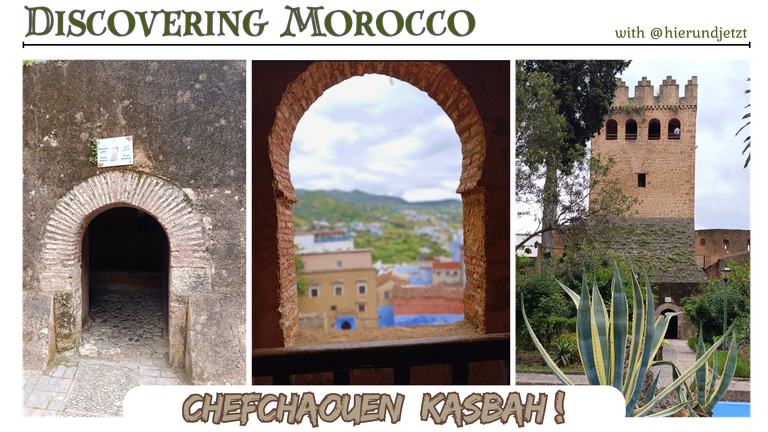
As you enter the main gate of the kasbah, you are immediately struck by the imposing appearance of its earth-coloured towers, almost intact despite the centuries. The grey sky that day added a certain gravity to the atmosphere, as if the place wanted to remind us of its historical importance. As soon as we entered, we found ourselves in an inner courtyard surrounded by high crenellated walls, with these ancient stones that tell a wordless tale of battles, soldiers' vigils, days of peace and tension.
As we move forward, we come across a small stone staircase leading up to one of the main towers. The ascent is narrow, almost discreet, but it invites us to explore without haste. The architecture, simple and solid, is marked by the centuries. Each step seems to have been polished by the footsteps of those who came before us. We feel very small in the face of this silent verticality.
Inside, the atmosphere changes. We enter a darker, almost mystical space. The stones on the floor are uneven, the air is fresher, and the rusty chains hanging on the walls bring us back to a harsh reality: this place was also a prison. We can imagine the low voices and heavy gazes of those who have passed through here. The contrast between the beauty of the exterior and the harshness of the interior touches us deeply.
When you emerge, you look up at the towers and discover a magnificent garden at their foot. A sober, square blue pool sits in the centre, with a fat plant at its heart that seems to watch over the surrounding calm. Around it, a few benches, trees, flowers and that gentle feeling of being out of time. Nature and stone coexist here like two intertwined memories.
This first corner of the kasbah is both an introduction and a step back in time. You enter it curious, and leave it respectful, almost silent. It's a place of calm and contemplation.

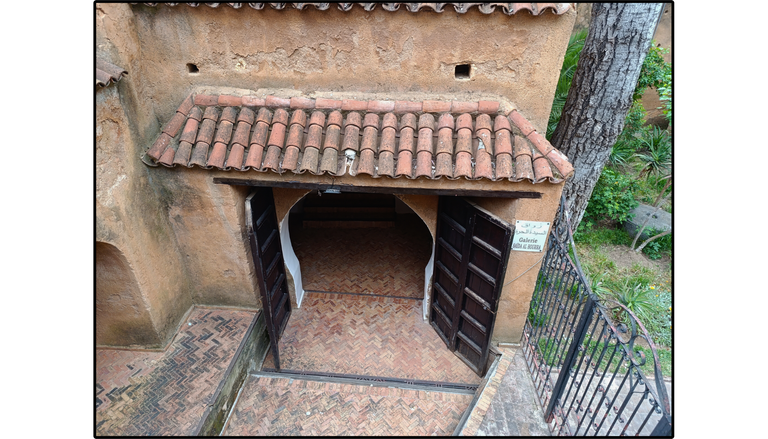
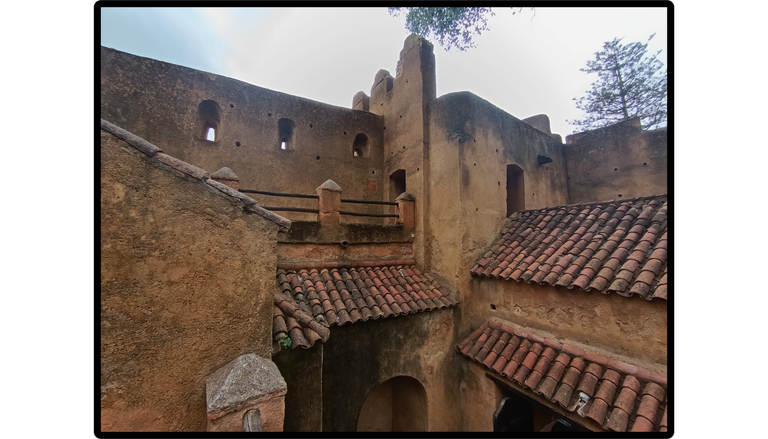
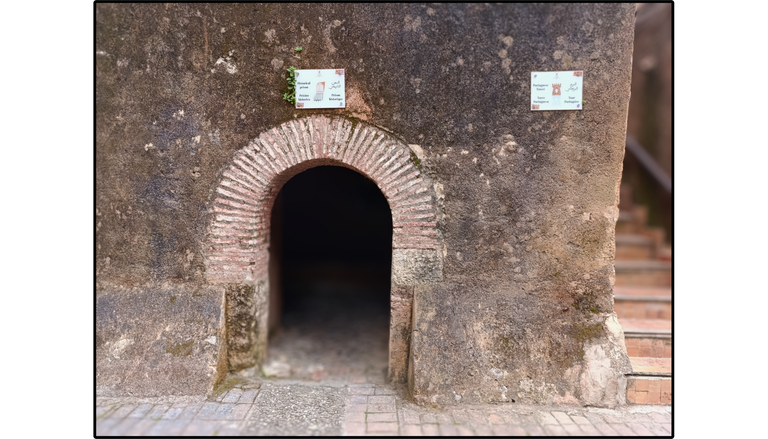
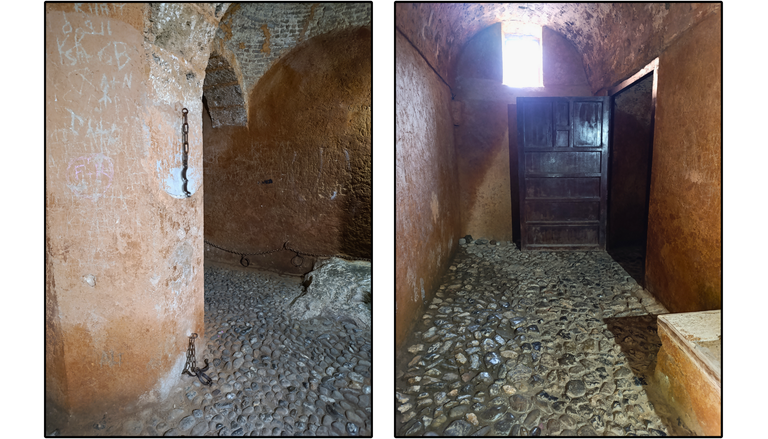
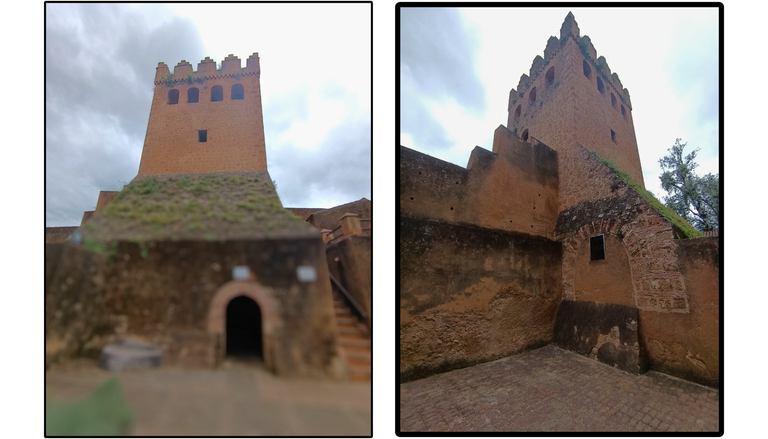
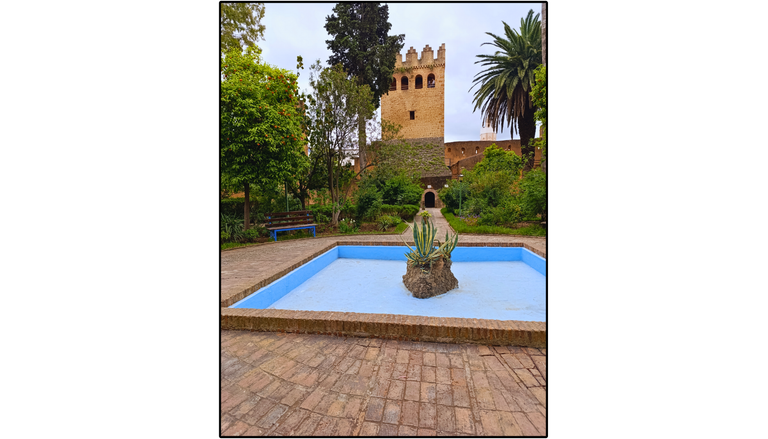
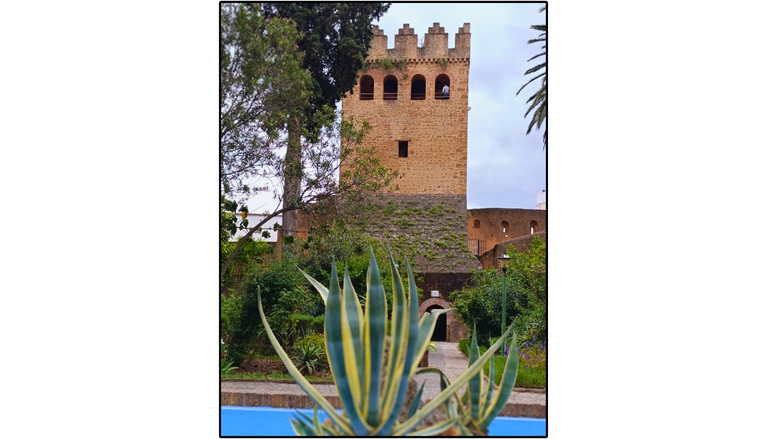
Continuing our stroll through the kasbah, we entered an interior building that had been transformed into a small cultural museum. The atmosphere was warm: earth-coloured walls, a dark wooden ceiling... Immediately, you feel plunged into another time, in a calm and intimate setting, perfect for discovering a piece of local history.
We moved quietly from one room to the next, guided by the panels hanging on the walls. They told us, in simple words and with images from the period, how the inhabitants of the Rif and Chefchaouen lived in days gone by. You can learn all about the traditional trades: weaving, pottery, or even the preparation of bread in earthen ovens. It also pays tribute to women and their essential role in the home, in the fields and in crafts. The black-and-white photos, full of emotion, show scenes of life as it used to be - simple gestures, clothes steeped in history.
We then went up a small spiral staircase to a room high above the ground. From up there, through small vaulted windows, there's a magnificent view: the city below, with its red roofs and blue walls, and, in the distance, the mountains covered in greenery. It's an almost magical landscape. We stayed there for a few moments, just to enjoy the silence and the beauty of the moment.
In another room, a sign talked about Moulay Ali Ben Rachid, the founder of Chefchaouen. You realise that this kasbah was not just a place of defence, but also a place of culture and spirituality, designed to be a powerful symbol of the town.
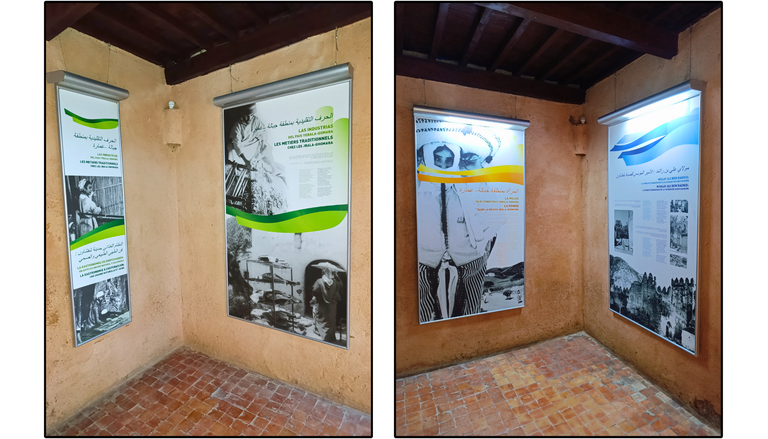
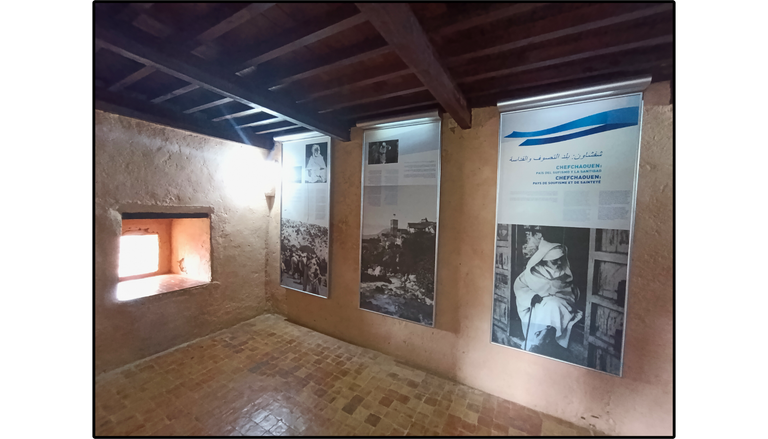
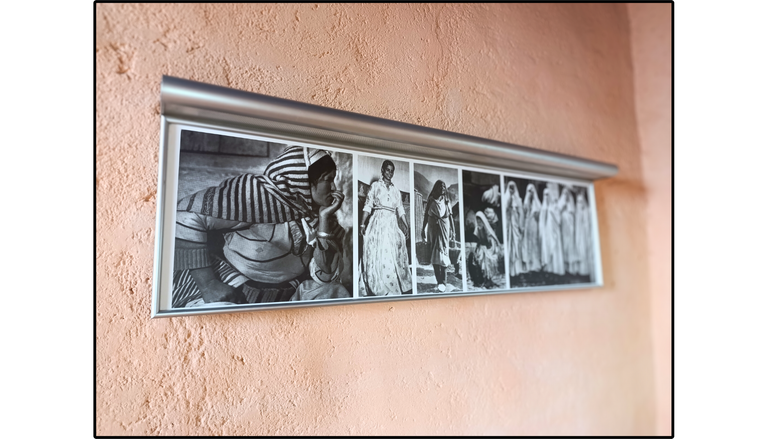
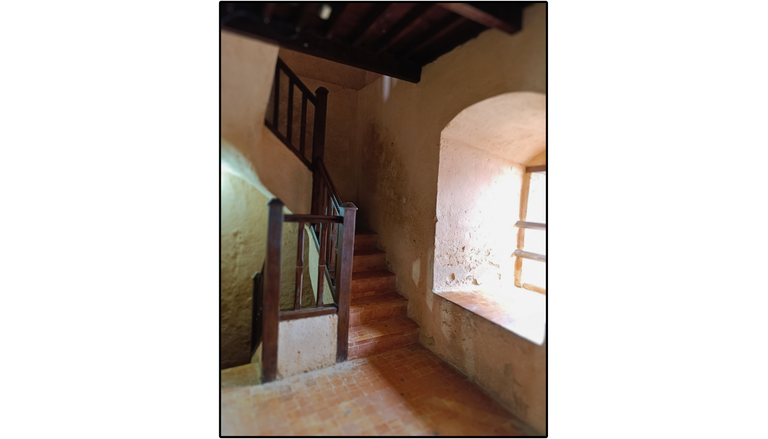
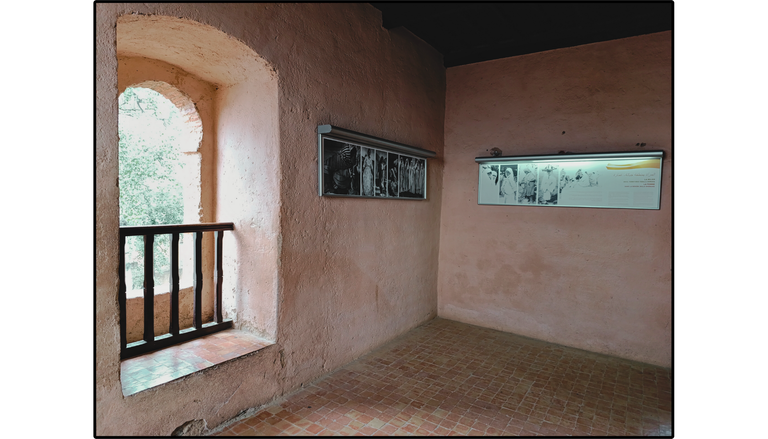
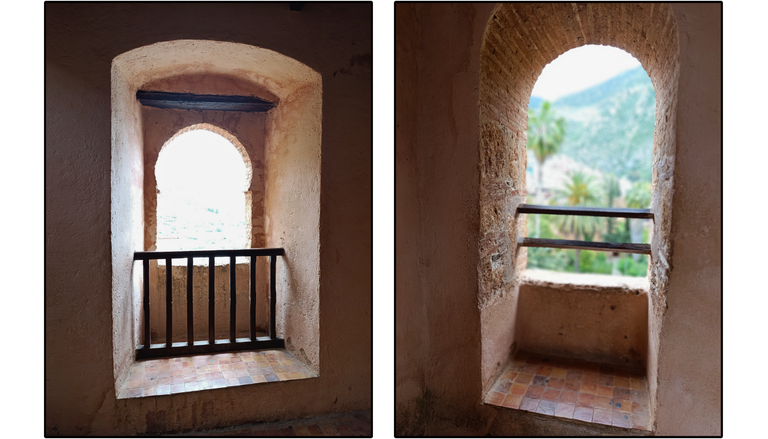
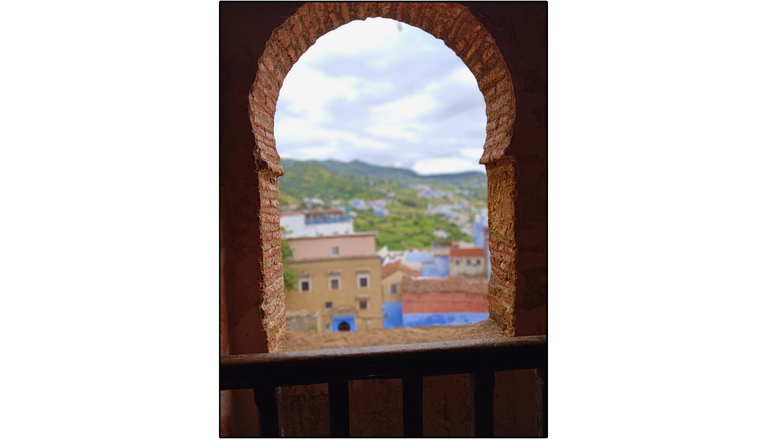
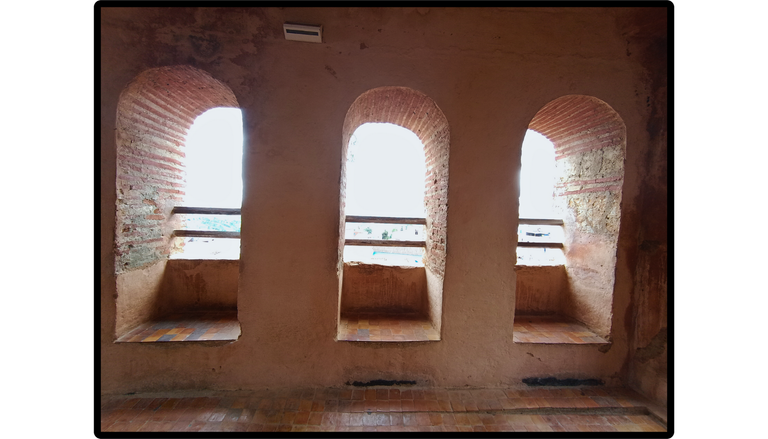
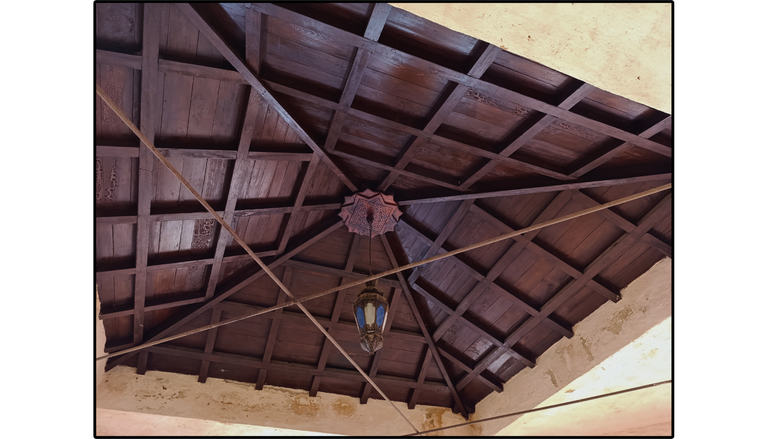
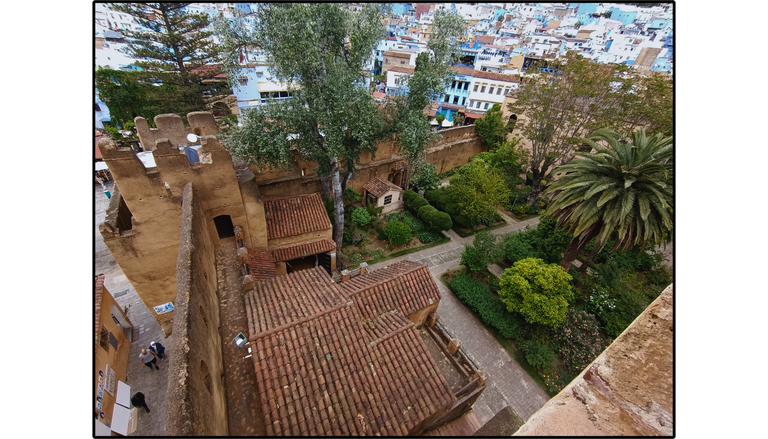

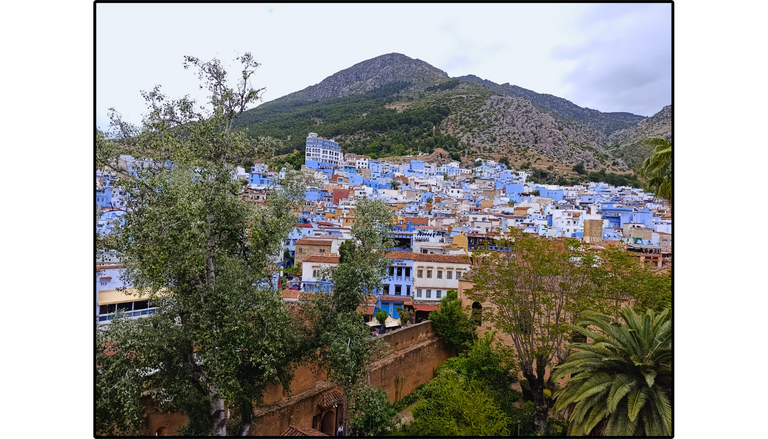
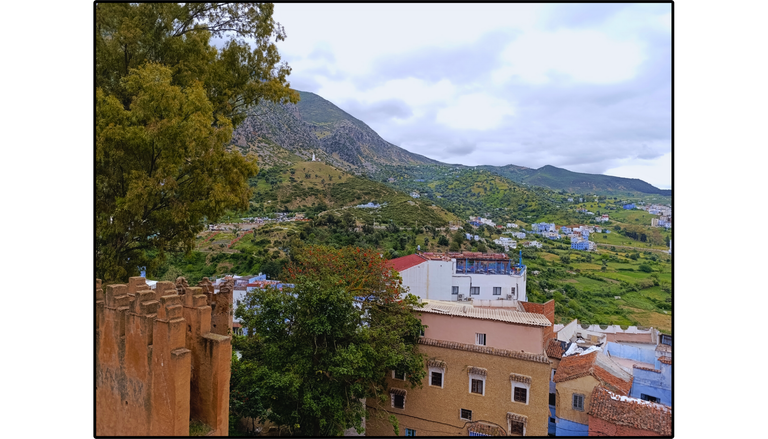
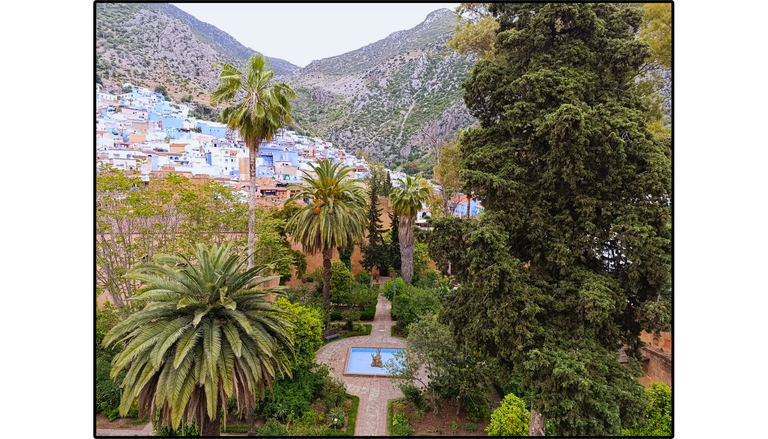
After discovering the first rooms of the museum, our visit continued towards another more rectangular building, with a sober and slightly more modern façade, but still in harmony with the ancient style of the kasbah. An arched doorway framed in red brick opened the way to a totally different atmosphere. Crossing this threshold, we enter a traditional house with a central patio, with its columns, semi-circular arches and, above all, this little pool in the middle of the zellige floor. Details like these are enough to transport us back to a time when every house was designed around freshness, light and inner repose.
In this new space, the exhibition is more structured, almost educational. Carefully displayed objects, explanatory panels on the walls, and even display cases containing samples of the materials used in the crafts: clay, carved wood, ornate plaster... All presented with simplicity, but with great clarity. We learn how the region's natural resources (such as clay and gypsum) have nurtured generations of craftsmen. There's even a panel on the links between craftsmen from the Tetouan region and those from the Spanish province of Granada. It's a nice surprise to see this Mediterranean link still alive.
The scenography is meticulous, but remains very accessible, almost familiar. You walk quietly through the dimly-lit corridors, reading, observing and marvelling at the small craft tools on display in a showcase: antique planes, saws, hammers... These simple objects tell the story of centuries of know-how handed down from hand to hand.
As you look up into the courtyard, you are struck by the beauty of the glass ceiling, modern yet perfectly integrated. Daylight gently streams in, illuminating the sand-coloured walls and dark wooden balustrades. The hanging lantern adds a discreet touch of elegance. It's a place where you could stay for hours, just observing, feeling and listening to the silence.
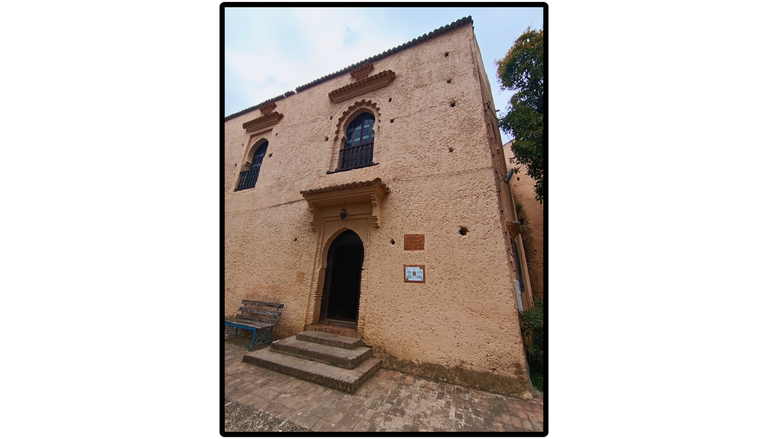

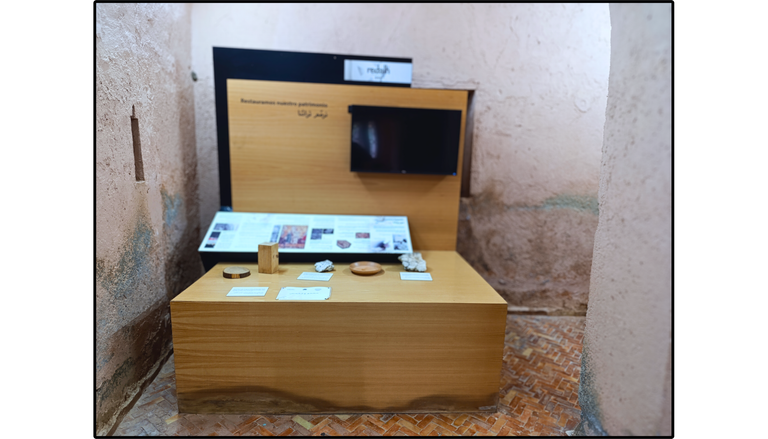
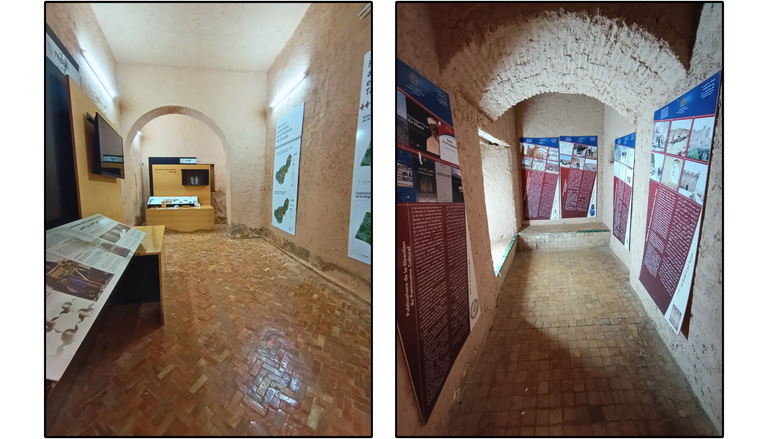
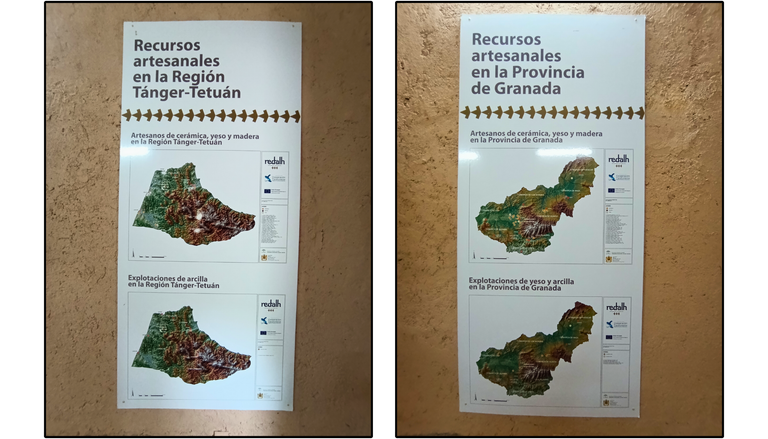
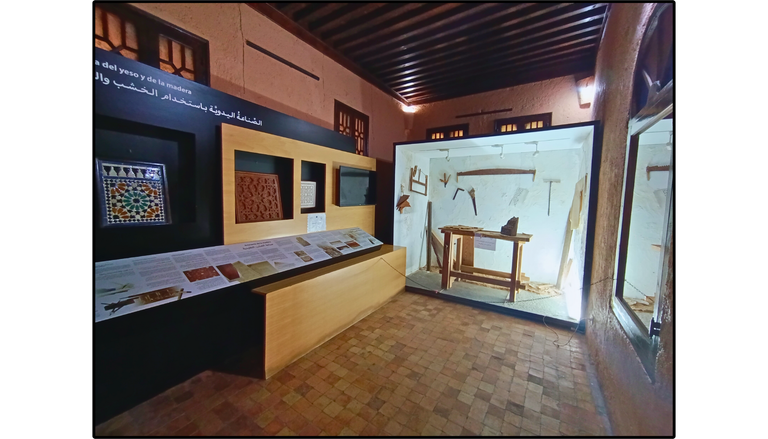
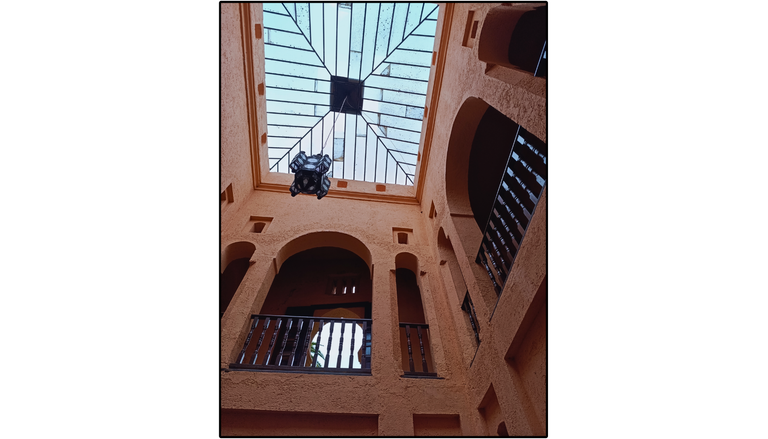
On leaving the kasbah, we all had that little moment of silence that follows a wonderful discovery. This visit not only gave us a better understanding of the history of Chefchaouen, but also allowed us to feel the soul of this very special town, where stone, crafts and nature come together in such harmony. Thank you for taking the time to read this post. I hope you've enjoyed this journey through my photos and my words as much as I have. Don't hesitate to leave me your impressions, and above all, stay tuned... Other places are waiting for you very soon in future posts!
See you soon!

I'm Redwan from Morocco ! I've always had a passion for travelling and discovery. Nothing gives me greater pleasure than exploring new places, whether historical, archaeological or in the heart of nature. Through my blogs, you can discover the hidden gems of Morocco, whether you want to admire the fascinating architecture of a historic site, delve into the legends surrounding an archaeological site, or simply marvel at the beauty of Moroccan nature!
All photos taken with a Redmi Note 13 pro smartphone and edited on canva !
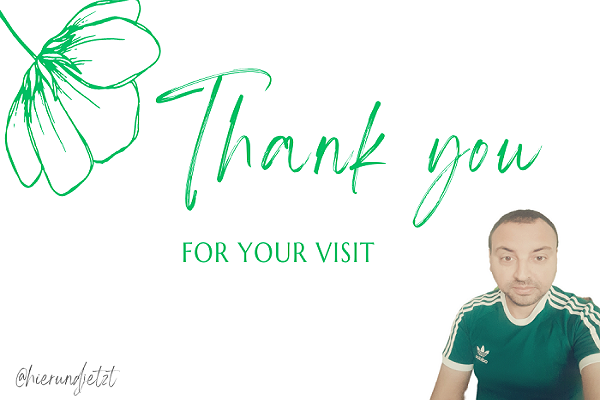
You can check out this post and your own profile on the map. Be part of the Worldmappin Community and join our Discord Channel to get in touch with other travelers, ask questions or just be updated on our latest features.
Hiya, @ybanezkim26 here, just swinging by to let you know that this post made it into our Honorable Mentions in Travel Digest #2570.
Your post has been manually curated by the @worldmappin team. If you like what we're doing, please drop by to check out all the rest of today's great posts and consider supporting other authors like yourself and us so we can keep the project going!
Become part of our travel community: